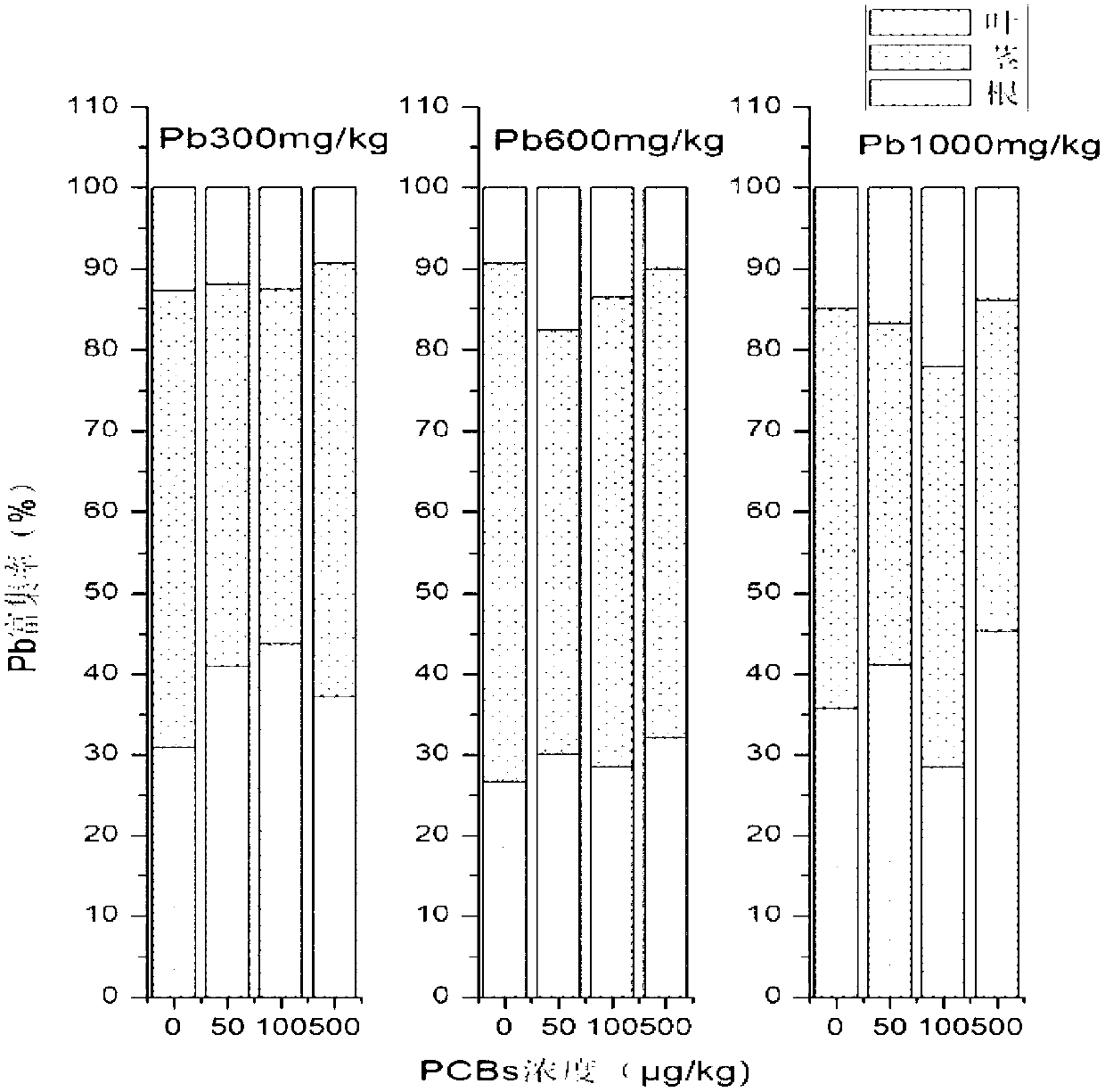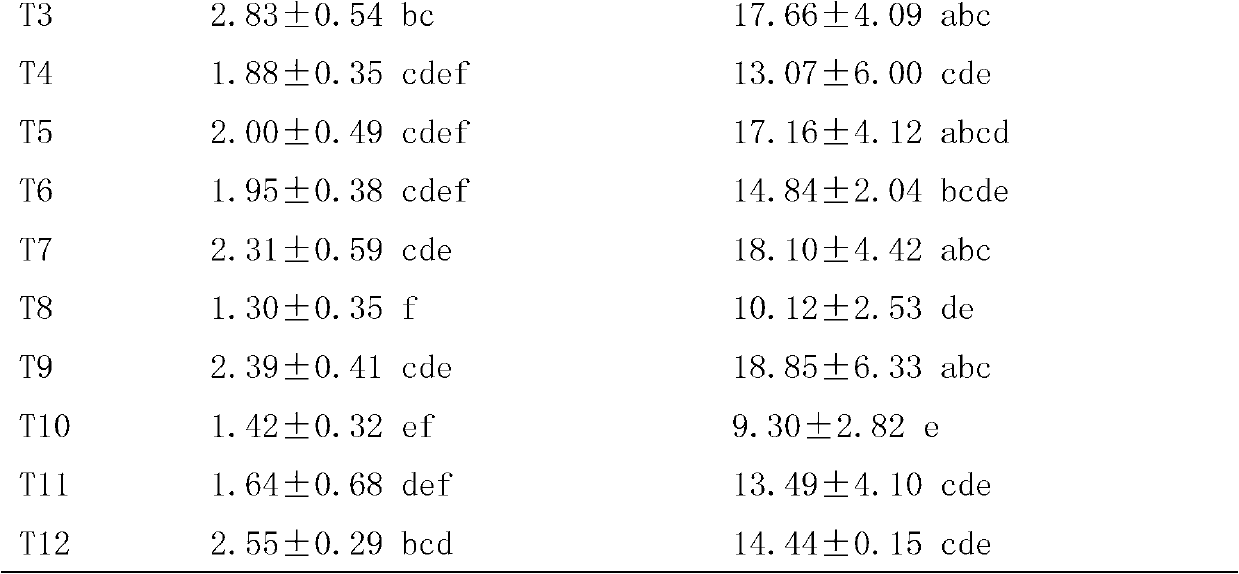Method for repairing lead-polychlorinated biphenyl combined polluted soil
A compound pollution and polychlorinated biphenyl technology, applied in the field of phytoremediation, can solve the problems of relatively little research on the remediation of heavy metals, and achieve the effect of improving soil degradation and productivity decline, low technical requirements, and strong adaptability
- Summary
- Abstract
- Description
- Claims
- Application Information
AI Technical Summary
Problems solved by technology
Method used
Image
Examples
Embodiment
[0018] A method for repairing lead-polychlorinated biphenyls (Pb-PCBs) compound polluted soil, the steps are as follows:
[0019] 1) Select plump Impatiens seeds, sterilize them with 10wt% hydrogen peroxide for 10 minutes, rinse them with distilled water, sow them in the soil of the seedling pots, and keep the soil moist;
[0020] 2) Transplant impatiens seedlings with a height of 5-8 cm and consistent growth into Pb-PCBs compound-contaminated soil, and water 1-2 times a day to keep the soil water content at 60-80% of the field water holding capacity;
[0021] 3) Remove impatiens from the soil as a whole when they are mature, and then plant the second batch of impatiens, and repeat the above operation until the content of Pb-PCBs in the soil drops to the environmental safety standard.
PUM
 Login to View More
Login to View More Abstract
Description
Claims
Application Information
 Login to View More
Login to View More - R&D
- Intellectual Property
- Life Sciences
- Materials
- Tech Scout
- Unparalleled Data Quality
- Higher Quality Content
- 60% Fewer Hallucinations
Browse by: Latest US Patents, China's latest patents, Technical Efficacy Thesaurus, Application Domain, Technology Topic, Popular Technical Reports.
© 2025 PatSnap. All rights reserved.Legal|Privacy policy|Modern Slavery Act Transparency Statement|Sitemap|About US| Contact US: help@patsnap.com



